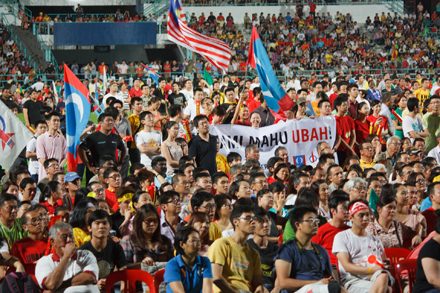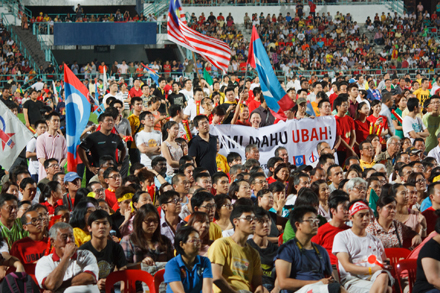This was supposed to be the “change” election in Malaysia, and in one respect it was: the opposition Pakatan Rakyat coalition, or PR, received a majority of the vote, even if the rural gerrymander means that the ruling Barisan Nasional coalition (National Front, or BN) retains 60 per cent of the seats. But on a lightning trip through all of Malaysia’s states during the two weeks of the campaign, I saw first-hand some of the stark political divisions that cleave Malaysian society and help explain the election outcome.
Some of the most memorable moments came at campaign events in opposition strongholds. In spirited rallies in both Chinese majority urban areas, and in the deeply Malay – and deeply Islamic – city of Kuala Terangganu on the east coast of the Peninsula, the mood for change was palpable. Huge and passionate crowds gathered, responding enthusiastically to the calls of “ubah” (change) and “ini kalilah!” (it’s time!).
But such rallies were also remarkable for how different they were from each other. Along the deeply Islamic east coast, the main opposition party is PAS, the All-Malaysia Islamic Party. At one huge rally we attended in Terengganu state, the crowd was almost entirely Malay; people sat cross-legged on the ground on mats they had brought for the occasion. The drawcard speaker was Azhar Idrus, a popular ustad, or religious teacher, who explained the failings of the government and the necessity for change in an earthy style expressed in an Islamic idiom. In the rallies of the DAP (Democratic Action Party), 90 per cent of the campaign speeches were in the various Chinese languages, and 90 per cent of the crowds were Chinese. There, people sat on plastic stools, or stood.
Read the full article at Inside Story.
 Facebook
Facebook  Twitter
Twitter  Soundcloud
Soundcloud  Youtube
Youtube  Rss
Rss 
